Eco-Friendly Upgrades for a Cleaner and Greener Home
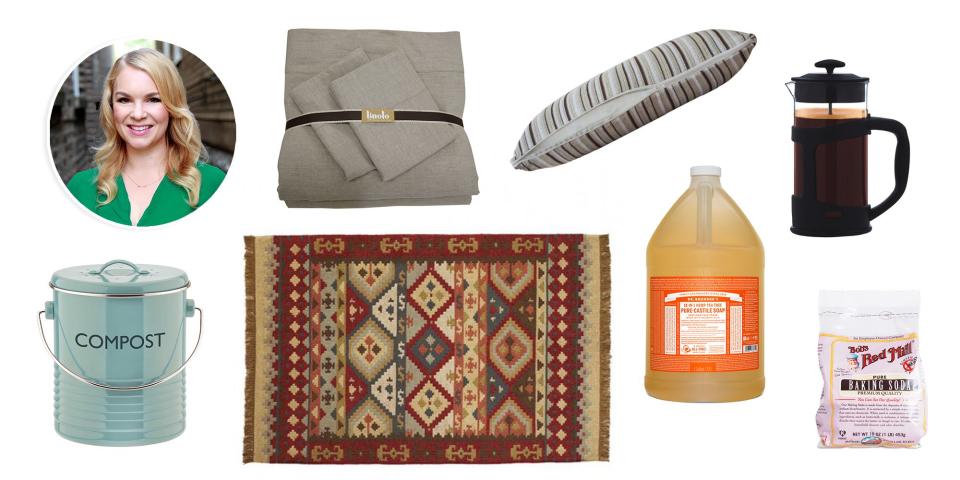
What does "green" actually mean?
For political-strategist-turned-eco-lifestyle-expert Ashlee Piper, her mission is to demystify the "green" movement to make it an easily approachable element in anyone's daily life. She says, "My aim is to just really educate folks on everything from fashion, beauty, home, and food in the realm of what's sustainable and environmentally friendly, and make it an inclusive and warm and fun concept."
"Green" is a pretty all-encompassing term, which in its most honest usage can cover anything from ethical cruelty-free or fair-trade practices to GOTS-certified organic cotton sourcing. But probably the easiest step towards this kind of lifestyle is simply to be more conscious with the green that's in your wallet.
"The dollar is really powerful," Piper says. "For me, 'Refuse' is the first R in the run of 'Reduce, Reuse, Recycle,' so you're not necessarily always going out and buying something - especially if it doesn't meet your own personal standards for what you want to support."
It's important to keep in mind that just because something is denoted as "green," doesn't necessarily mean the product itself is environmentally friendly. "Green" is still an unregulated term, and at times, an ambiguous descriptor used purely for marketing purposes. At its worst, Piper says, "it leads to a lot of misleading consumers and abusing the way that those products are marketed."
While some of us may view eco-friendly products as a splurge, or a trip to the organic grocer as an occasional treat, it's really about making better choices that can actually save you money in the long run. Piper says, "How you eat, how you set up your home, how you travel ... we just don't need as much stuff as we think we do to be happy."
Brands with this same eco-conscious mission have made making the greener choice as easy as possible, too. Looking for certain symbols, such as the Leaping Bunny on cruelty-free beauty and baby products, or the USDA organic seal on food packaging, ensures that your money is being spent in a responsible way. Piper says, "Usually, retailers and brands are really proud of having that designation, and they're going to put it everywhere on their product."
She continues, "It costs a little bit more to pay people a fair wage, it costs more for organic or non-GMO ingredients, so I think being attuned to the symbols and also being willing to buy better, and buy fewer, means shelling out a little bit more money for a product with more sterling quality."
Piper notes that there isn't necessarily a one-size-fits-all approach to this lifestyle, since everyone's situation is different. She says, "I'm a big believer in people doing what feels comfortable for them, that's going to become a positive habit. Everybody has their own unique definition of what that is."
There are few useful green tweaks that anybody can do in the home, that can also help cut down on monthly energy expenses. "Installing dimmer switches can save up to $40 per month, low-flow showerheads save half a gallon of water per minute, and mirrors can enhance a room's natural light as opposed to adding more fixtures," Piper suggests.
For those looking to take a more eco-conscious approach with their purchases this Earth Day and beyond, we asked Piper for the upgrades and swaps that she would recommend to make our homes a little more cleaner and greener:
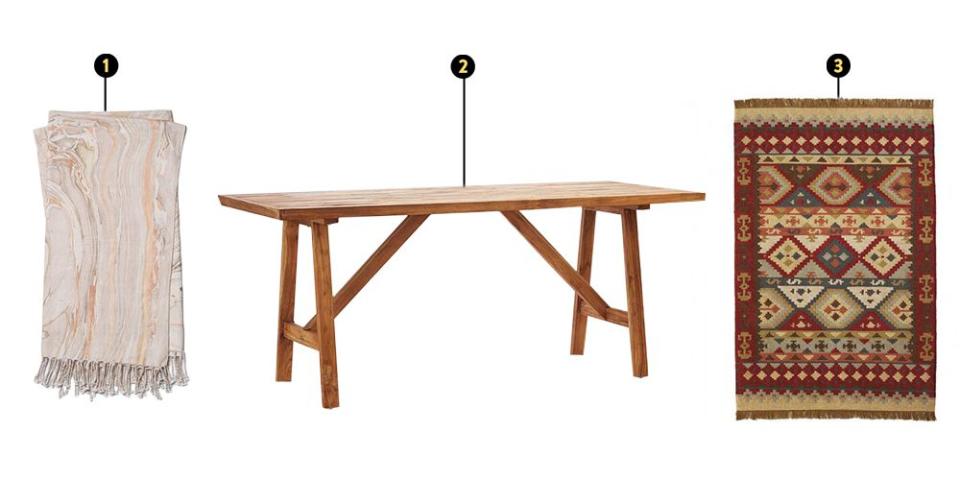
Buy Sustainably Sourced Decor Picks
1. Loloi Nika Marbled Cotton Throw, $119, vivaterra.com; 2. Teak Four-Season Table, $895, vivaterra.com; 3. Red Kilim Indoor/Outdoor Recycled Rug, $255, vivaterra.com
When it comes to the home, a streamlined, clutter-free style is the key to becoming more mindful and eco-friendly. "Generally, minimalism is always a great idea," Piper says. "When I go into someone's space, and I see that they just have a thousand tchotchkes cluttering up their home, and tons of appliances plugged in that they've never used before, not only is that hard on the environment because of the peripheral energy used, but it also just makes your space so much less livable and enjoyable."
But for the household furnishing a new space, and putting budget and carbon-footprint-consciousness first, buying furniture secondhand is the greenest place to start. Piper says, "For furnishing needs, I recommend folks start with Craigslist and their local consignment and resale shops. You can find incredibly well-styled treasures (like legit mid-century furnishings) for significantly less than retail."
In addition, you can shop the online retailer Viva Terra for goods crafted with fair-trade, all-natural, and environmentally conscious practices as the driving forefront of their business.
Then, once you're fully furnished, let the DIY decorating begin.
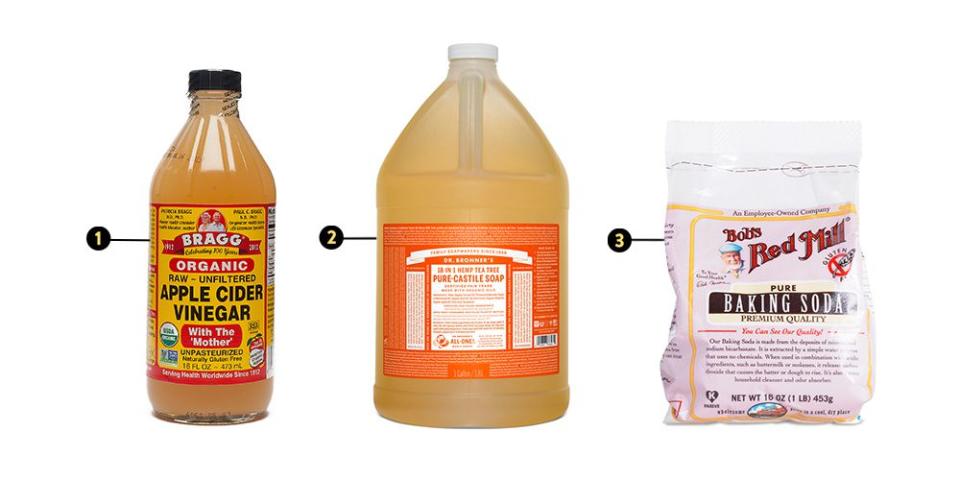
Streamline Your Cleaning Arsenal
1. Bragg Organic Apple Cider Vinegar, $3, thrivemarket.com; 2. Dr. Bronner's Tea Tree Pure-Castile Soap, $58 for one gallon, amazon.com; 3. Bob's Red Mill Baking Soda, $2, thrivemarket.com
Adopting a greener lifestyle means a major shift in thought around the standard array of household cleaning supplies, which really does no favors when it comes to conserving environmental resources, or cutting down on the toxins in our homes.
Piper says, "We've been led to think, 'I need eight million products in my cleaning arsenal,' and that's simply not true. You need basically three, and you're pretty much good to go."
This core group of three are all non-toxic, vegan products that have tons of household uses. Piper elaborates, "I would definitely recommend no matter where you move or live, invest in a big ol' bottle of Dr. Bronner's Castile Soap."
Put the soap's "18-in-1" uses to the test, and you may even come up with a whole lot more around your own house, as well as for personal use. Marketed typically as body wash, you can also use it to wash dishes, pets, and even scrub toilets!
"It's biodegradable, so it completely assimilates in water, and it's totally non-toxic, there's nothing in there that's going to trigger an allergy, or contribute to a carcinogenic buildup in the body," Piper says.
The other two green cleaning essentials should be no-brainers: baking soda and vinegar, both readily available at any grocery store. Piper says, "Those two things can do a ton of fantastic stuff in your home without the chemicals."
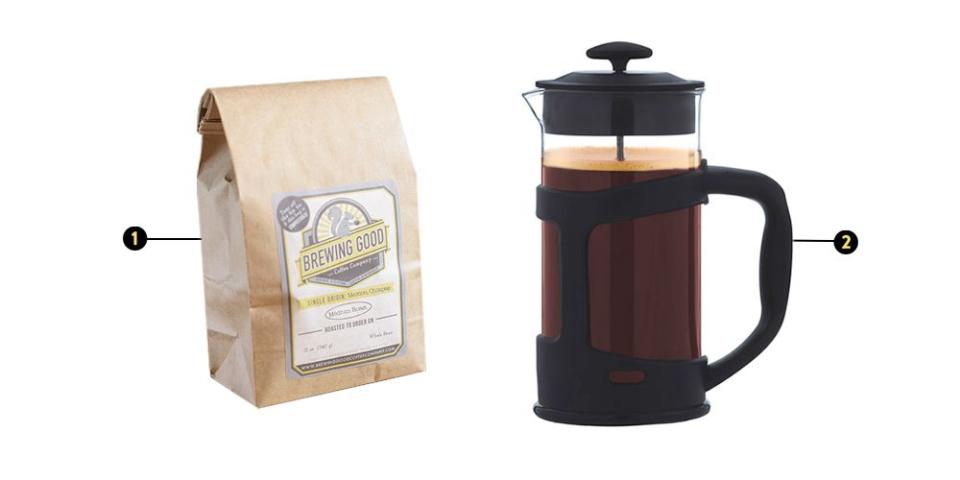
Pour Yourself a Totally Eco-Friendly Brew
1. Brewing Good Mexico Chiapas Coffee, $15, brewinggoodcoffeecompany.com; 2. Grosche Terra French Press, $20, amazon.com
Do away with the wasteful disposables, use up less of your home's energy, clear your counter space, and still get your daily caffeine buzz by rethinking your morning routine. Piper says, "I love this recycled and stylish French press that allows you to make a killer cup without the wasted power and disposable filters. And Brewing Good coffee is as good as it gets: Rainforest-certified, bird-friendly, fair-trade, organic, and proceeds go to animal rescue groups. And it's damn tasty, too."
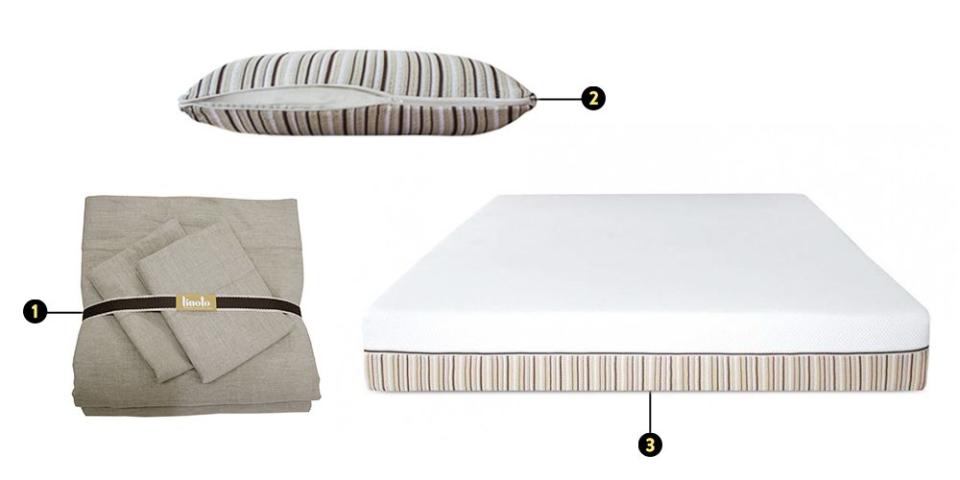
Shop All-Natural Sheets for a Cleaner Night's Sleep
1. Linoto Belgian Eco-Linen Sheet Set, from $469, linoto.com; 2. Essentia Classic Memory Foam Pillow, from $219, myessentia.com; 3. Essentia Classic 8 Performance Mattress, from $2,325, myessentia.com
You spend each night swaddled up in your bed linens - make sure that those materials that get such intimate contact are actually not doing you any harm. Piper says, "I adore Essentia's all-natural, nontoxic memory foam mattresses and pillows. They're non-allergenic and organic, and have a killer warranty."
And while there's no shortage of great-quality sheet options out there, this top-rated linen pick from Linoto has the benefit of being majorly eco-friendly, and has that lived-in, yet totally luxe feeling that's a joy to tumble into at night.
"They're made in the USA, stay cool in the summer (linen is naturally moisture-wicking) and warm in the winter, are easy to wash and dry, last pretty much forever with good care, and flax grows so quickly that it's as sustainable as they come," Piper adds.
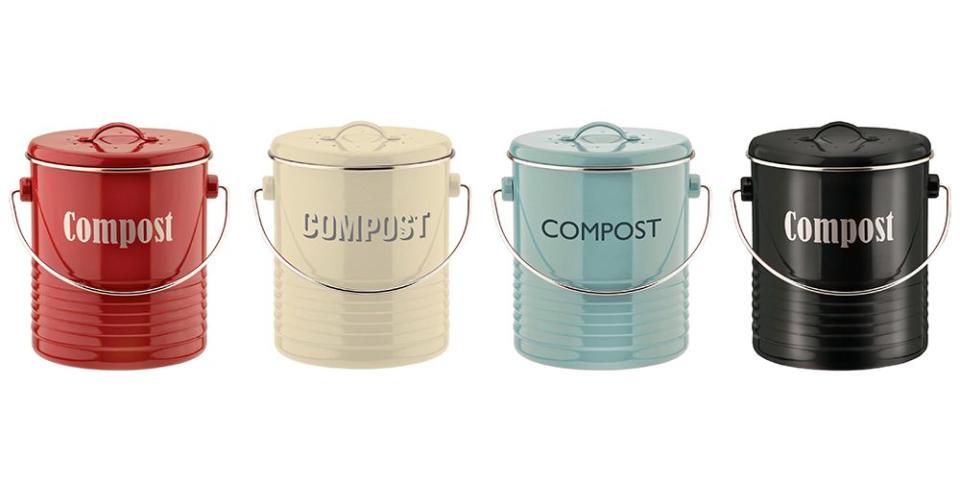
Consider Composting
Typhoon Summer House Blue Compost Caddy, from $39 each, amazon.com
If the last you heard about composting was from your grade-school Earth Science class, it's time to re-educate yourself. Piper says, "Composting gets a bad rap, but it couldn't be easier. Kitchen and outdoor composters are awesome and stylish, and they divert thousands of pounds of trash from landfills each year (and help keep your garden looking dope)."
This cute vintage-style compost caddy serves as a convenient holding place for all of your family's biodegradable food scraps until you bring it out to your own backyard compost pile or local drop-off site.
We asked an expert how we can up our eco-conscious game, well beyond Earth Day.